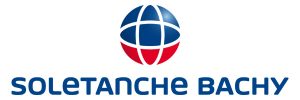Tideway East – Earl Pumping Station (2022)
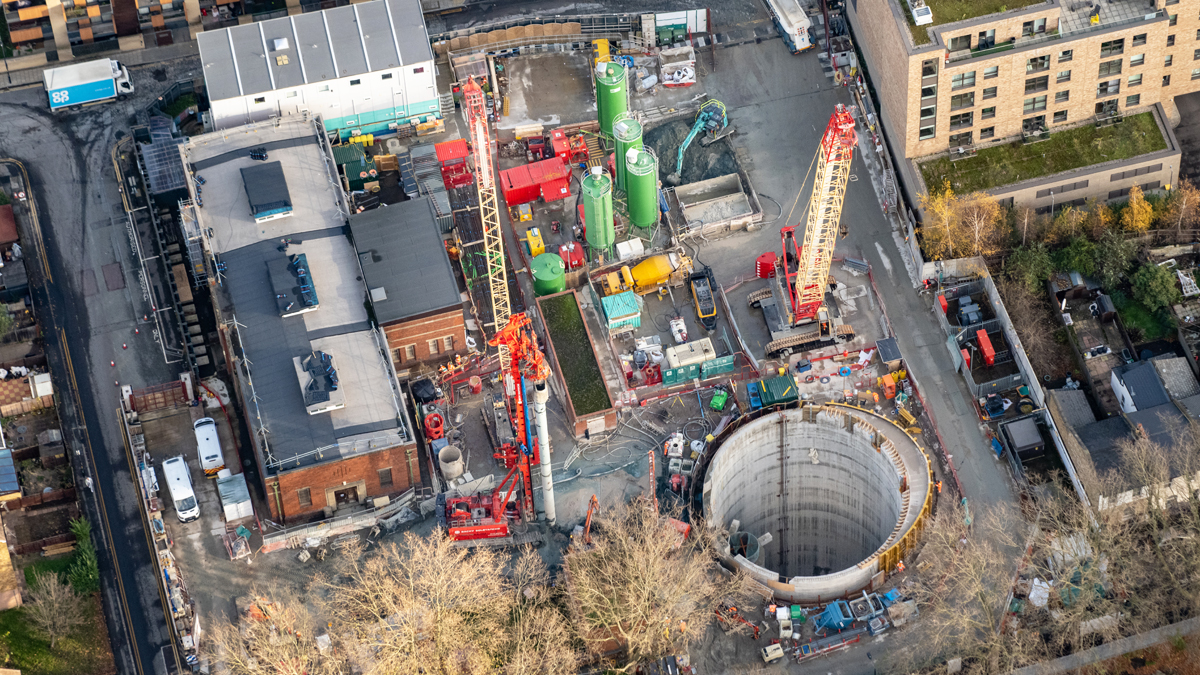
Earl Pumping Station site during geotechnical works - Courtesy of CVB JV
A complex ground improvement scheme has been designed and installed at Earl Pumping Station (EARPS), one of Tideway East’s sites, to enable the excavation and permanent works for the combined sewage overflow (CSO) chamber to be carried out. Challenges such as local contamination, site congestion, costs and time scale had to be overcome by delivering an innovative, safe and sustainable scheme. Sustainability is a big part of Tideway as a whole, with its primary aim an environmental one; to clean the River Thames. The geotechnical works at EARPS have been designed and completed with sustainability at the forefront of decision making.
Introduction to Tideway
Tideway is the largest ever project undertaken in the UK water industry. The colossal scheme consists of a 25km TBM bored tunnel with numerous shafts, associated outfalls and surface structures along its route and will expand London’s existing network 150 year old. With London’s population having more than doubled and the area of permeable surfaces decreased significantly, the current network can no longer handle the combined flows, resulting in frequent discharges into the Thames.
The Tideway project has been split into three sections – West, Central and East. This paper focuses on an enabling works project in the East Section which is being delivered by CVB JV (a joint venture between Costain, Vinci Grands Projets and Bachy Soletanche).
Earl Pumping Station (EARPS)
Earl Pumping Station is one of the smallest sites on the Tideway project at less than a hectare in size. The works involve connecting the existing 1940s operational pumping station to the newly constructed Greenwich Connection Tunnel below – a tributary to the main 25km Tideway Tunnel ‘Super Sewer’. A drop shaft 51m in depth with an internal diameter of 17m will divert sewage overflows for treatment at Beckton STW, that currently discharge directly into the River Thames during most rainfall events.
The site was formally industrial land and as a result is highly contaminated, adding to the complexities of this already challenging construction site.
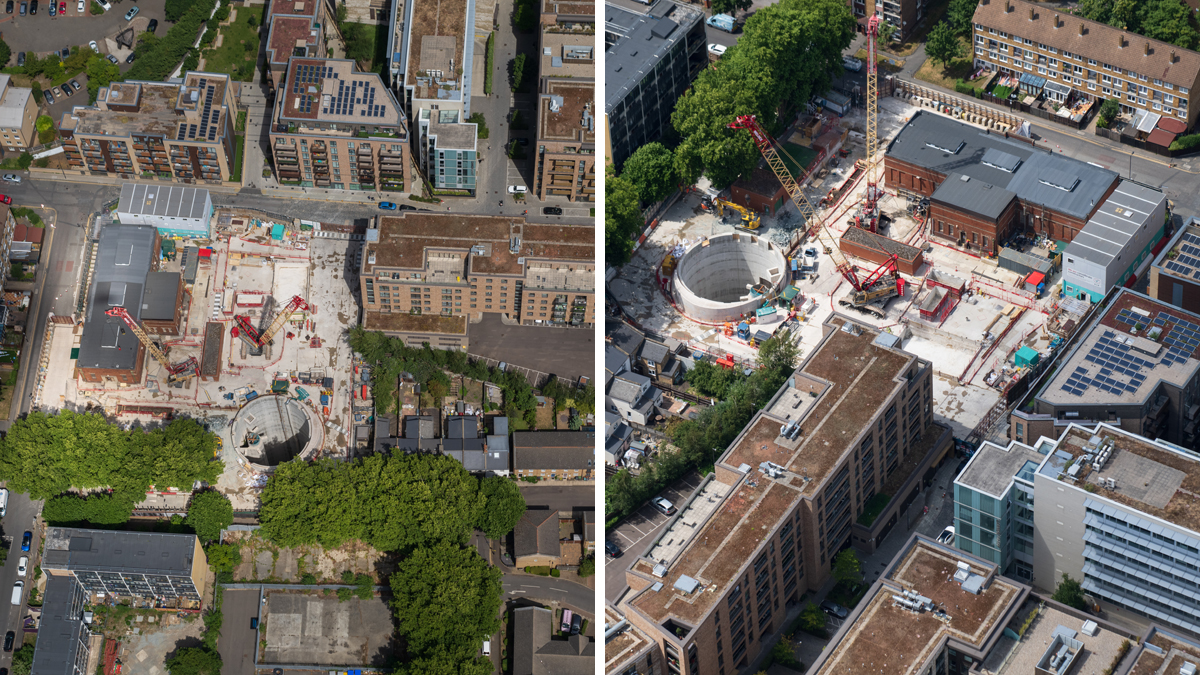
Aerial views showing site constraints at EARPS – Courtesy of CVB JV
Ground improvement scheme
The Earl Pumping Station site was highly contaminated as a result of being at the location of an old Tar Works. This has led to the soils and the upper aquifer to be grossly contaminated with PAH and TPH including a plume of Dense-Non-Aqueous-Phase-Liquid (DNAPL) contaminant sitting at approximately 10mbgl in the area where the geotechnical works were to take place.
The geotechnical processes of jet grouting and deep soil mixing involved injecting a grout mix into the subsurface allowing for the binding of the soils in the area for easier excavation and the decontamination of groundwater while dewatering of the CSO once excavation has begun.
Ground granulated blast furnace slag
Cement is a key material within the industry; however it has an exceptionally high carbon output connected to its production. Any reductions made in the use of this material can realise significant opportunities in carbon reduction for particular works packages. Low carbon cement replacements are a key method for reducing embodied carbon in the grout mix required for the ground treatment works.

Bound material – Courtesy of CVB JV
Ground granulated blast-furnace slag (GGBS) is a low carbon material arising as a by-product from the iron making industry. As a by-product, there is little carbon output associated with this material. The use of GGBS used in combination with CEMI is in accordance with the British Standard for Concrete, BS 8500-2. Under the standard, GGBS is referred to as an ‘addition’ and counts fully towards the cement content in concrete.
There are significant environmental and financial benefits in the replacement of grout cement binder with GGBS. A binder ratio of 80% GGBS and 20% CEMI was identified within the design mixture for these activities (deep soil mixing and jet grouting). Through the use of GGBS, CVB JV were able to reduce total carbon associated with the activities by 2692 TCO2e (72% reduction from a standard CEMI mix). Approximately £49,000 in cost savings are predicted to be realised through the substitution of this low carbon material due to reduced material costs.
The soils in this area of the site are grossly contaminated and have, from past excavations on site, been removed as hazardous waste. However, the injection of the grout mix while under a permit for ground remediation has altered the chemical concentrations within the soil matrix. This has allowed for any material removed from the very contaminated area of site to be classified as non-hazardous soils. This meant the material cored and excavated during these geotechnical works and the ~5000T of material to be removed in future CSO excavation works will be for beneficial re-use after removal from site rather than going to a landfill while also saving the project money.
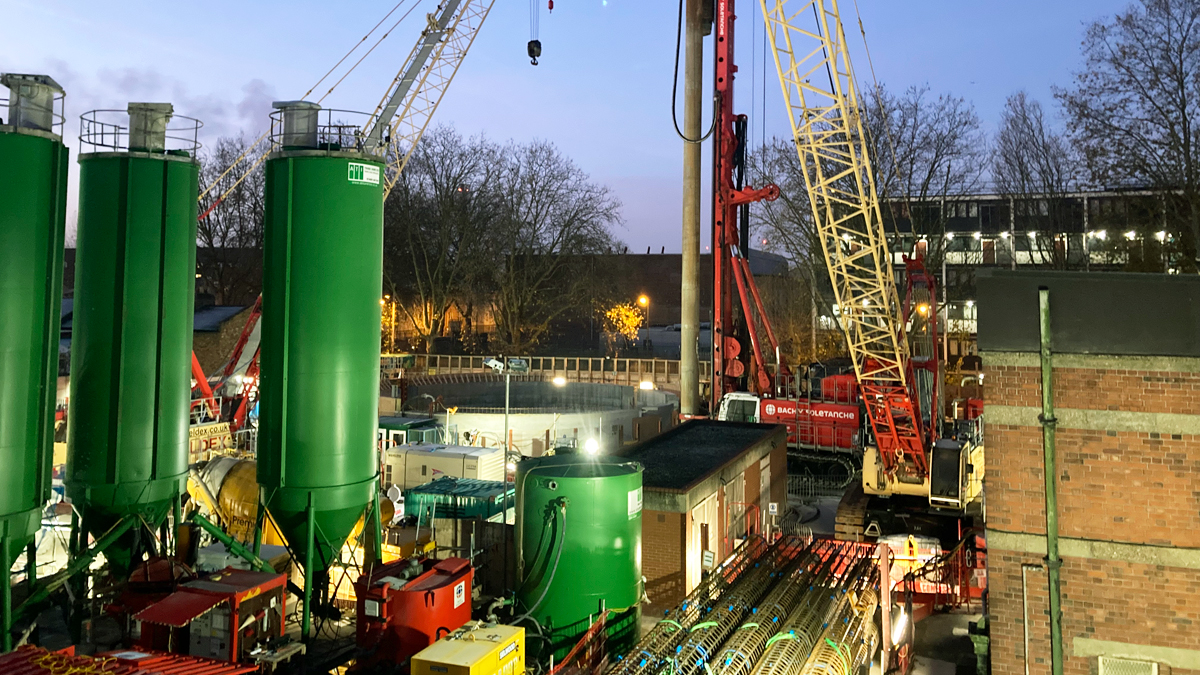
Geotechnical works setup with silos of CEM I and GGBSF – Courtesy of CVB JV
EARPS Ground Improvements – Supply chain: key participants
- Main contractor: CVB JV
- Main designer: Wentworth House Partnership
- CAT ll designer: Bachy Soletanche
- CAT lll designer: OTB Engineering
- Groundwater testing & DNAPL recovery: Golder Associates
- Muck-away: Keltbray Group
- GGBS & CEMI (powder): Hanson Concrete
Health & Safety
The ground remediation of this area has also made it safer for the operatives later in the project. All operatives working in this area of contamination use gas monitors, Respiratory protective equipment and coveralls when required to limit their exposure to harmful gases and soils. When the CSO is excavated later this year, all material encountered will have been treated with the addition of the grout mix. This will mean the risks to human health of the operatives will be greatly reduced.
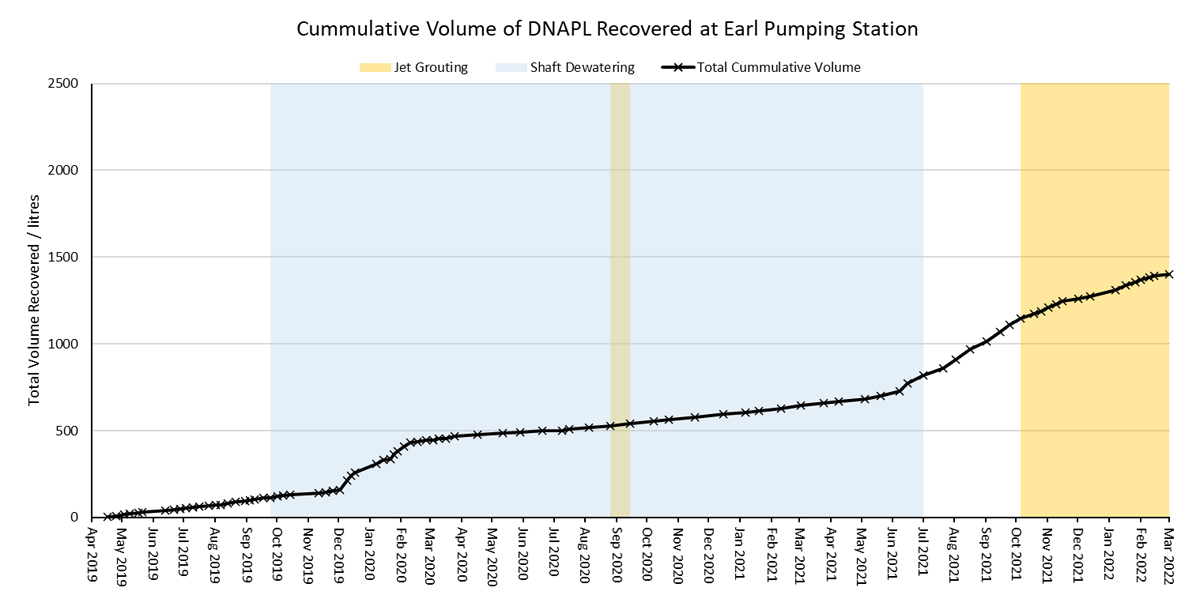
Cumulative volume of DNAPL recovered – Courtesy of CVB JV
Progress
During the geotechnical ground improvement works, the DNAPL has been pumped out of the subsurface. From January 2021 to March 2022, 400 litres of DNAPL have been removed with over 800 litres extracted. Not only has this ensured ongoing protection of groundwater resources during construction, but this has greatly also improved the ground conditions in the local area and made it cleaner for current and future uses of this space. CVB have been working closely with the Local Authority and the Environment Agency to demonstrate betterment in the land quality aspects of CVB’s ongoing works.



